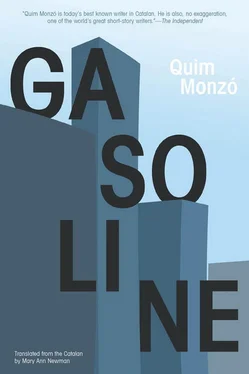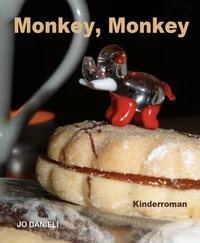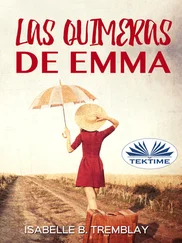Quim Monzó - Gasoline
Здесь есть возможность читать онлайн «Quim Monzó - Gasoline» весь текст электронной книги совершенно бесплатно (целиком полную версию без сокращений). В некоторых случаях можно слушать аудио, скачать через торрент в формате fb2 и присутствует краткое содержание. Год выпуска: 2010, Издательство: Open Letter, Жанр: Старинная литература, на английском языке. Описание произведения, (предисловие) а так же отзывы посетителей доступны на портале библиотеки ЛибКат.
- Название:Gasoline
- Автор:
- Издательство:Open Letter
- Жанр:
- Год:2010
- ISBN:нет данных
- Рейтинг книги:5 / 5. Голосов: 1
-
Избранное:Добавить в избранное
- Отзывы:
-
Ваша оценка:
- 100
- 1
- 2
- 3
- 4
- 5
Gasoline: краткое содержание, описание и аннотация
Предлагаем к чтению аннотацию, описание, краткое содержание или предисловие (зависит от того, что написал сам автор книги «Gasoline»). Если вы не нашли необходимую информацию о книге — напишите в комментариях, мы постараемся отыскать её.
Gasoline — читать онлайн бесплатно полную книгу (весь текст) целиком
Ниже представлен текст книги, разбитый по страницам. Система сохранения места последней прочитанной страницы, позволяет с удобством читать онлайн бесплатно книгу «Gasoline», без необходимости каждый раз заново искать на чём Вы остановились. Поставьте закладку, и сможете в любой момент перейти на страницу, на которой закончили чтение.
Интервал:
Закладка:
He feels happy. There’s so much to do! The notebook labeled paintings is full of notes. “So many paintings I’ll never get to. . Life is too short for all the work one could do. I ought to hire people, find a team of collaborators to assist me.” He takes out a notebook, the one where he wrote about smoothing out the theoretical framework — labeled ideas — and writes: “Find team of collaborators. Or commission paintings to others? Commission other artists to paint them? Would they be offended? How about selling them the ideas so that they can develop them, or use them as is?” He shuts the notebook and drops it on top of another one that says environments.
Helena is turning the gold doorknob on the bungalow door. Humbert jumps up from his chair and goes over to hug her. They kiss. Helena carefully spreads the contents of the bag she is carrying on the floor: cheeses, pâtés, spinach salad and cole slaw, apples, frozen yogurt, and a bottle of vodka. Humbert looks at the label, takes the paintings notebook out of the drawer, and writes: “Do fake labels.” Then he thinks better of it: he crosses it out, puts the book in the drawer, and takes out another one, labeled objects. He writes: “Do fake wine labels, fake jars, fake wrappings. Do cardboard boxes for liquid products: soup, wine. . Do plastic bottles with fine wine labels. Do tin cans for champagne.”
“I’m starved. .” Humbert says.
They eat the cheese, the pâtés, the salad and slaw, the apples, and the frozen yogurt. They open the vodka, drink from the bottle, and have sex on the floor. When they are finished, Humbert gets up, opens the paintings notebook, and writes: “Couples having sex, in many colors and extravagant positions.” He thinks for a moment and adds another line: “Totally black painting titled Love in the Dark .” In the environments book he writes: “A boxing ring completely covered over with a white sheet. Audience in bleachers. In the ring boxers fight unseen by audience.” He opens another notebook, labeled concepts, and writes: “A dictionary with all the ‘obscene’ entries crossed out and replaced with ‘proper’ entries. And vice-versa. Two dictionaries, then. Possible variations: rewriting of political, urbanistic, botanical, and psychological terminologies. .” He shuts the notebook and looks at it. Though Helena didn’t see eye to eye with him at all on this, and thought that he would be better off tossing notebooks titled concepts and environments into the fire, he believes that those, shall we say, “objectual” styles of the previous decade, done with a little bit of flair, would not have passed under the art-business radar without a trace.
“Don’t you think conceptualism would have been more fruitful if it had been done with a little more style and wit?”
Helena doesn’t answer. She’s fast asleep. He looks closely at her, stretched out face down on the floor of the studio, amid the salad bowls and wine glasses. Two men burst through the door and, just as she is lying, face down, they use her sexually (use her sexually?), like animals. Not two men, three. He takes out the paintings notebook and jots down: “Variation on the theme of the painter and his model, as done above all by Picasso: the model with two or three men, and the painter watching and painting, or with a video camera.” He takes out the videos notebook and “Reflect on pornography in video.” Then he does a couple of sketches of Helena in soft pencil on sheets of paper. He also takes out his camera and photographs her. He takes advantage of the time she is asleep to finish up three of the half-finished paintings, plan five new ones, and read a brief guide to Jamaican art that he had picked up at the airport when they landed. When Helena wakes up they have sex again, and afterwards he dashes right down to the swimming pool and dives in.
He puts on a pair of shorts and a Hawaiian shirt. He combs his hair in front of the mirror. He walks slowly down the steps. The reporter is waiting for him next to the pool. He is disappointed that he is not wearing a fedora with a press card sticking out of the hatband. His showing up in that Texan shirt, those dark glasses, and that can-do attitude were all annoying details that denoted a certain disregard. The reporter gets up from the lawn chair he’s been sitting on, comes over with his hand stretched out, and thanks him for agreeing to the interview. Ms. Sorrenti already informed them that he turned down other interviews. He is aware, he says, that the artist can ill afford to waste time. They think it will be better to do the interview there instead of waiting for him to get back, because, at poolside, in that gorgeous Caribbean sun a stone’s throw from the beach and the palm trees, the photographs will come out much better. From behind the palm trees, a bearded guy is approaching, wearing a khaki safari jacket; a couple of cameras dangle from his neck. He waves with one hand and buttons the last button of his fly with the other.
“This is the photographer. Would you mind sitting here in this lawn chair? Would you mind just wearing your swimming trunks? What made you choose Jamaica for your vacation?
•
“. . Ever since he was a child, he had known he would be an artist. When he was four years old they used to find him drawing in every nook and cranny of the house. In the dark, on any old scrap of paper. He would draw chairs, tables, stacks of dirty dishes, his father, his mother, the maid, and then he would show it all to his sister. At school he would draw (out of the teachers’ sight, in the back of his notebooks) medieval battles, or scenes from World War II, or aliens. Once a teacher had caught him sketching a Martian instead of following his math class. When he was fourteen, he had registered at the Escola Massana. .”
“The municipal art school, in Barcelona.”
“He did two years there. Then he took a year off from studying. On Sunday he would go to town squares and to spots around Montjuïc to paint, with a folding easel and a box of oil paints. He worked in a technical studio, as a draughtsman. The following year, when he came back from vacation, he tried to register at the Massana, but he was too late and couldn’t get in. He went to the Llotja. .”
“Another school. Picasso went there as a young man.”
“Picasso!”
“He studied there for a year. He painted still lifes, plaster sculptures, live models. He dreamed of having a show. He sent a drawing, which was rejected, to the Ynglada-Guillot competition, and another to the Joan Miró competition, with the same result.”
“Those are two drawing awards. You’ve never heard of them?”
“The following year, he continued studying, but now on his own. He submitted another entry for the Joan Miró award and, this time, he came out forty-second on the list of entries. This had delighted and frustrated him at the same time: so close to an honorable mention, and yet not quite there. . In desperation, he convinced a friend (whose father had a bar in La Sagrera). .”
“A neighborhood in Barcelona.”
“He convinced a friend (whose father had a bar in La Sagrera) to talk the man into letting him hang his paintings on the walls of the bar. They did the show, which no one but the habitués of the bar attended (and all they noticed and mentioned to the proprietor of the establishment was that they didn’t care for those somewhat stylized paintings of nudes; they preferred the girls on the Damm beer calendars). .”
“Damm is a brand name.”
“The shows he saw at the gallery of the Architects’ Guild, across from the Barcelona cathedral, led him to ponder the issue of the artist in relation to his surroundings at length. He then went through a fervent period of abstraction. Thanks to the articles Alexandre Cirici Pellicer wrote in. .”
Читать дальшеИнтервал:
Закладка:
Похожие книги на «Gasoline»
Представляем Вашему вниманию похожие книги на «Gasoline» списком для выбора. Мы отобрали схожую по названию и смыслу литературу в надежде предоставить читателям больше вариантов отыскать новые, интересные, ещё непрочитанные произведения.
Обсуждение, отзывы о книге «Gasoline» и просто собственные мнения читателей. Оставьте ваши комментарии, напишите, что Вы думаете о произведении, его смысле или главных героях. Укажите что конкретно понравилось, а что нет, и почему Вы так считаете.












